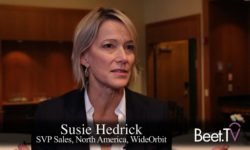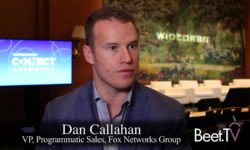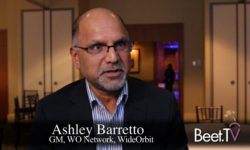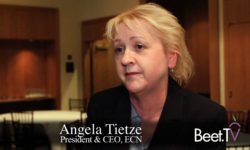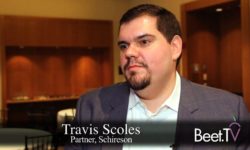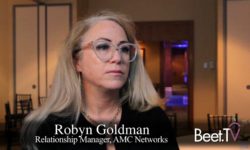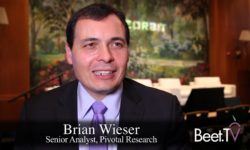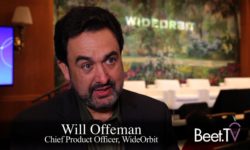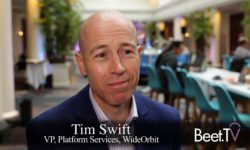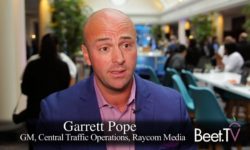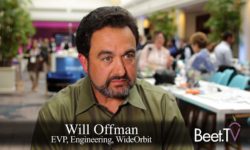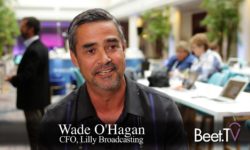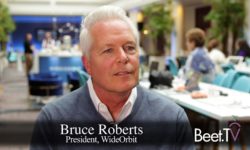Representing 50% of the domestic television impression supply, the OpenAP audience-targeting consortium has reached critical mass and created a uniform currency around advanced advertising, says Viacom’s John Halley. Phase Two will see more publishers joining OpenAP as it works on ease-of-use and other improvements for media buyers.
In this interview with Beet.TV at the recent WideOrbit Connect conference, Viacom’s COO of Ad Sales recaps the progress of OpenAP, which began as an initiative of Fox, Viacom and Turner and offers observations on future growth based on current use by advertisers in several categories. Newer members include NBCUniversal and Univision.
A big impetus behind OpenAP was the fact that publishers had their own advanced-advertising products but the way they defined audiences differed.
“We were all using our own fusion methodologies to, say, come up with an in-target segment list for movie enthusiasts. It was defined differently. The response from buyers was “I’m not buying the same thing.” By providing the “element of currency” that had been missing, OpenAP unified audience target definitions, according to Halley.
The platform has a tool that allows advertisers or agencies to define their target segments using “a wide variety of data sets, and then share that segment across multiple publishes who will then guarantee the buy against that common audience definition,” Halley says.
“This allows buyers the opportunity to look at publishers on a relative basis so they can evaluate share and how much they’re willing to pay for advanced segments. It has done a great deal to provide momentum around the volume of investment in advanced advertising.”
Still, these are still the “very early stages,” says Halley, noting that for some advertisers, advanced buying “is exactly where they should be.” Examples are response-based advertisers and categories like studios, automotive and quick-serve restaurants. One thing they have in common is “they tend to work a lot with data in the first place. They tend to be predisposed to buy it because they have the capabilities in-house to activate in that fashion.”
Over time, as other kinds of consumer products become more data-centric, “you’re going to see an increase in the buying against advanced segments. I would also say that this is really prep for an addressable marketplace, where we’re going to be matching advanced audience segments on a one-to-one basis more broadly.”
Halley places OpenAP’s combined member footprint at 50% of the domestic television impression supply, “so we do think feel like we’re at a critical mass as it is. But I would expect there to be additional key publishers joining the consortium in the near term. We’re going to be taking on other problems. I would look for other kinds of ease of buying type solutions coming up in the near term.”
This video is part of a Beet.TV series on advanced TV produced at the WideOrbit Connect conference. WideOrbit is the sponsor of this series. Please find more videos here.






